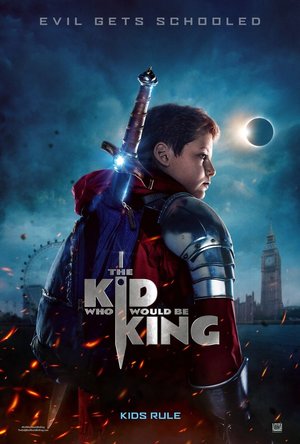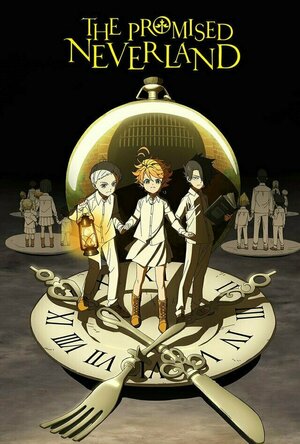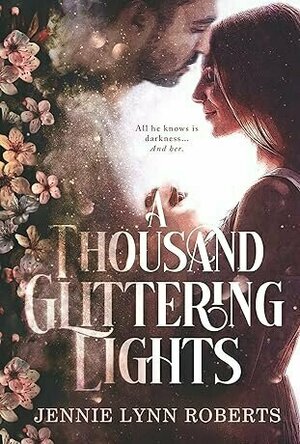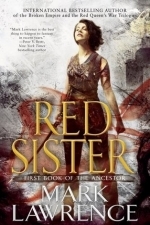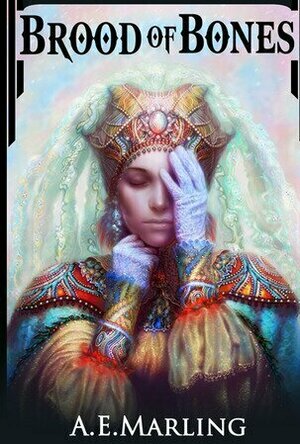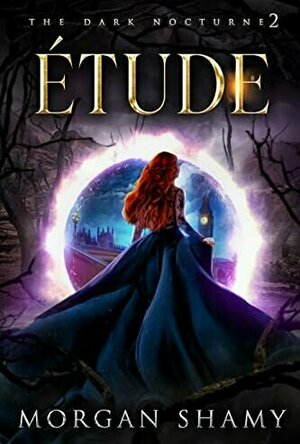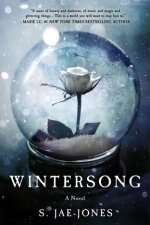Search
Search results
Gareth von Kallenbach (980 KP) rated The Kid Who Would Be King (2019) in Movies
Jul 2, 2019
Alex Elliott (Louis Ashbourne Serkis), is a 12 year old boy that isn’t afraid to stand up to bullies and defend his friends. As noble as his deeds are, he ends up becoming the school bullies Lance (Tom Taylor) and Kaye’s (Rhianna Dorris) target. They chase him to an abandoned construction site where he falls off a ledge and encounters the notorious sword in the stone. As many are aware of King Arthur’s sword in the stone story, the person that pulls the sword from the stone shall become King of England. To his and his best friend Bedders’s (Dean Chaumoo) surprise, Alex draws the sword (aka Excalibur) from the stone and moments later Merlin appears (Angus Imrie) and warns Alex and Bedders of the danger that lies ahead. Morgana (Rebecca Ferguson), King Arthur’s half-sister, and her army of fire burning dead soldiers are on a mission to get Excalibur and take over Earth. Merlin encourages Alex, Bedders and the two bullies, they must put their differences aside to beat Morgana and save the world.
A clever modern day continuation to the story of the Sword in the Stone with a Lord of the Rings spin to it that’s appropriate for kids. All our main characters are children/teenagers, including Merlin, who at random climactic moments in the film transforms into an elder version of himself and is played by the legendary Patrick Stewart. Bedders’s role is similar to that of loyal and dopey, but brave Samwise Gamgee. He helps Alex recruit soldiers to help fight Morgana’s army and never leaves his best friend’s side.
A unique story about loyalty and working together to do what’s best to defeat evil and save Earth. Glad to see family friendly movies dabbling into the genre of medieval fantasy again. There are moments in the film that drag on. They should have omitted several scenes and the long run time of 2 hours and 12 minutes could have been shortened. Very much geared towards kids ages 8 and up, there are some dark moments that may not be suitable for the younger ages. Prepare for lots of adventure, laughter, and good vs evil story, one the whole family can enjoy.
A clever modern day continuation to the story of the Sword in the Stone with a Lord of the Rings spin to it that’s appropriate for kids. All our main characters are children/teenagers, including Merlin, who at random climactic moments in the film transforms into an elder version of himself and is played by the legendary Patrick Stewart. Bedders’s role is similar to that of loyal and dopey, but brave Samwise Gamgee. He helps Alex recruit soldiers to help fight Morgana’s army and never leaves his best friend’s side.
A unique story about loyalty and working together to do what’s best to defeat evil and save Earth. Glad to see family friendly movies dabbling into the genre of medieval fantasy again. There are moments in the film that drag on. They should have omitted several scenes and the long run time of 2 hours and 12 minutes could have been shortened. Very much geared towards kids ages 8 and up, there are some dark moments that may not be suitable for the younger ages. Prepare for lots of adventure, laughter, and good vs evil story, one the whole family can enjoy.
Charlie Cobra Reviews (1840 KP) rated The Promised Neverland in TV
Jul 7, 2020
A Stand Out From This Spring Season Anime
The Promised Neverland is a 2019 dark fantasy/sci-fi/thriller anime directed by Mamoru Kanbe and written by Toshiya Ono, and music by Takahiro Obata. It was animated by CloverWorks Studio and originally aired in Japan from January to March. The series was streamed on Crunchyroll, Hulu, FunimationNow and Hidive by Animplex of America and aired on Toonami in April. A second season was announced and planned for 2020.
For Emma, an 11-year old orphan living in Grace Field House, life has never been better. Her and 37 other orphans enjoy gourmet food, plush beds, clean clothes, games, and the love of their "Mother", Isabella, the caretaker. The orphans are allowed complete freedom, except to venture beyond the grounds or the gate, which connects the house to the outside world. One night Emma and Norman (another orphan) find the dead body of an orphan who was sent away to be adopted at the gate. This is where they realize the truth of their existence in the orphanage and become determined to break out of Grace Field House and escape along with their other siblings.
This show was a welcomed change for me from the normal anime I watch and very different. I enjoy anime like this that make you think and have a bit of mystery to them. For those looking for something that doesn't involve fighting, powering up, blasts or transformations then this is something that you might want to check out. This anime intrigued me right away from the first episode by it's premise and what it alluded to. I really liked the characters and their personalities and they way they used their intelligence especially since they are all portrayed as children. I kept trying to figure out where the plot was going with it and happily surprised that I couldn't always guess where it was going. This is definitely one of the stand outs from the spring anime season. I give it a 8/10 and it gets my "Must See Seal Of Approval".
For Emma, an 11-year old orphan living in Grace Field House, life has never been better. Her and 37 other orphans enjoy gourmet food, plush beds, clean clothes, games, and the love of their "Mother", Isabella, the caretaker. The orphans are allowed complete freedom, except to venture beyond the grounds or the gate, which connects the house to the outside world. One night Emma and Norman (another orphan) find the dead body of an orphan who was sent away to be adopted at the gate. This is where they realize the truth of their existence in the orphanage and become determined to break out of Grace Field House and escape along with their other siblings.
This show was a welcomed change for me from the normal anime I watch and very different. I enjoy anime like this that make you think and have a bit of mystery to them. For those looking for something that doesn't involve fighting, powering up, blasts or transformations then this is something that you might want to check out. This anime intrigued me right away from the first episode by it's premise and what it alluded to. I really liked the characters and their personalities and they way they used their intelligence especially since they are all portrayed as children. I kept trying to figure out where the plot was going with it and happily surprised that I couldn't always guess where it was going. This is definitely one of the stand outs from the spring anime season. I give it a 8/10 and it gets my "Must See Seal Of Approval".
Charlie Cobra Reviews (1840 KP) rated Love, Death & Robots in TV
Jul 7, 2020
Unique And Visceral Experience
Love, Death, & Robots is an adult animated anthology tv series on Netflix. The series is produced by Joshua Donen, David Fincher, Jennifer Miller, and Tim Miller. Each of the 18 episodes released on the first season was animated by different crews from a range of countries. It's also a re-imagining of 1981 animated sci-fi film Heavy Metal. Starring Mary Elizabeth Winstead, Topher Grace, Gary Cole, Samira Wiley, and Stefan Kapicic.
Produced by different casts and crews, and consisting of 18 stand-alone episodes, each under 20 minutes, the title of the series refers to the recurring themes of love, death, and robots in each episode. Full of terrifying creatures, wicked surprises and dark comedy, it's a collection of animated short stories spanning several genres like horror, comedy, fantasy, and science fiction. Captivating stories come to life with world-class animation in a plethora of tales unlike anything else.
This series was wicked awesome. Reminded me of some of the other animated anthologies I've seen such as The Animatrix and Batman: Gotham Knight, except quite a bit more NSFW. This series also gave me a Twilight Zone vibe but bit darker. More blood and guts and highly sexual. Even though it's pretty graphic, I really liked a lot of the stories they told and the twists that most had in the end as well. Some are kind of hit or miss or just better than others but I think that there is definitely something for everyone despite the gore and nudity and language. I especially enjoyed the following episodes, 1. Sonnie's Edge, 8. Good Hunting, 10. Shape-Shifters, 13. Lucky 13, and 18. Secret War. The way they went about the story telling and world building in each episode was phenomenal. I really feel that some of these episodes deserve their own individual films or series to do them better justice. I mean some were just so good and less than 20 minutes felt like not enough or that they could have been even better. I give the entire series overall a 9/10.
Produced by different casts and crews, and consisting of 18 stand-alone episodes, each under 20 minutes, the title of the series refers to the recurring themes of love, death, and robots in each episode. Full of terrifying creatures, wicked surprises and dark comedy, it's a collection of animated short stories spanning several genres like horror, comedy, fantasy, and science fiction. Captivating stories come to life with world-class animation in a plethora of tales unlike anything else.
This series was wicked awesome. Reminded me of some of the other animated anthologies I've seen such as The Animatrix and Batman: Gotham Knight, except quite a bit more NSFW. This series also gave me a Twilight Zone vibe but bit darker. More blood and guts and highly sexual. Even though it's pretty graphic, I really liked a lot of the stories they told and the twists that most had in the end as well. Some are kind of hit or miss or just better than others but I think that there is definitely something for everyone despite the gore and nudity and language. I especially enjoyed the following episodes, 1. Sonnie's Edge, 8. Good Hunting, 10. Shape-Shifters, 13. Lucky 13, and 18. Secret War. The way they went about the story telling and world building in each episode was phenomenal. I really feel that some of these episodes deserve their own individual films or series to do them better justice. I mean some were just so good and less than 20 minutes felt like not enough or that they could have been even better. I give the entire series overall a 9/10.
Merissa (12911 KP) rated A Thousand Glittering Lights in Books
May 22, 2024
A THOUSAND GLITTERING LIGHTS is set in the contemporary world, with a game designer as our FMC. The MMC remains a mystery so I won't say anything to spoil it.
Jennie Lynn Roberts is a one-click author for me BUT I will admit to feeling slightly dubious when I saw this was a contemporary. Surely it can't be as good as her fantasy - can it? The obvious answer is YES!!! It can be just as good, in fact, I'm hard-pressed to say which I prefer.
Ellie isn't having an easy time of it and struggles to leave the safety of her cottage. Her best friend and business partner is giving Ellie plenty of excuses about why she can't be there for her. Her dad is pressuring her to sell her business. And then - out of nowhere - a man, or ghost, starts appearing to Ellie. She thinks she's going mad. And I loved it.
There is a level of mystery to this story that had me hooked. I didn't try to figure things out for myself. I just sat back and let the story hold me, and boy, did it ever. There were so many levels to this that all fitted together perfectly in ways that might not be immediately clear. In fact, I think I may be a little afraid of this author if she ever decides to go 'dark!' 😆
This book was a very emotional read for me, with situations and circumstances so incredibly well written, I felt it like a punch to the throat. I was f'ugly crying more than once, while still trying to convince myself that I'd get my HEA.
There's so much to this book that I absolutely adored and have no hesitation in HIGHLY RECOMMENDING. Seriously, get your copy and lose yourself in this steamy, supernatural romance.
** same worded review will appear elsewhere **
* A copy of this book was provided to me with no requirements for a review. I voluntarily read this book; the comments here are my honest opinion. *
Merissa
Archaeolibrarian - I Dig Good Books!
May 22, 2024
Jennie Lynn Roberts is a one-click author for me BUT I will admit to feeling slightly dubious when I saw this was a contemporary. Surely it can't be as good as her fantasy - can it? The obvious answer is YES!!! It can be just as good, in fact, I'm hard-pressed to say which I prefer.
Ellie isn't having an easy time of it and struggles to leave the safety of her cottage. Her best friend and business partner is giving Ellie plenty of excuses about why she can't be there for her. Her dad is pressuring her to sell her business. And then - out of nowhere - a man, or ghost, starts appearing to Ellie. She thinks she's going mad. And I loved it.
There is a level of mystery to this story that had me hooked. I didn't try to figure things out for myself. I just sat back and let the story hold me, and boy, did it ever. There were so many levels to this that all fitted together perfectly in ways that might not be immediately clear. In fact, I think I may be a little afraid of this author if she ever decides to go 'dark!' 😆
This book was a very emotional read for me, with situations and circumstances so incredibly well written, I felt it like a punch to the throat. I was f'ugly crying more than once, while still trying to convince myself that I'd get my HEA.
There's so much to this book that I absolutely adored and have no hesitation in HIGHLY RECOMMENDING. Seriously, get your copy and lose yourself in this steamy, supernatural romance.
** same worded review will appear elsewhere **
* A copy of this book was provided to me with no requirements for a review. I voluntarily read this book; the comments here are my honest opinion. *
Merissa
Archaeolibrarian - I Dig Good Books!
May 22, 2024
Jamie (131 KP) rated Red Sister in Books
May 18, 2017
Excellent writing style (2 more)
Well developed characters
Fascinating world and magic system
A fun dark fantasy with an interesting world
Nona has a natural ability to fight and at nine years old she’s already convicted of murder. She finds herself whisked away to a special covenant that trains young girls to become assassins, and herein lies the base of the plot and all I can say is WOW. I was absolutely blown away by Red Sister.
The world building in this book is phenomenal and I want to know so much more about it. The sun is dying, the planet is slowly being enclosed in ice and with it humanity is changing, becoming desperate and looking to prophecies. There is a focus on the four races, each with unique talents in combat. The magic system is complex and is split between two schools of magic, and there is a plethora of diverse specializations for both.
On top of the detailed world, the book also nailed atmosphere. I felt a sense of wonder as Nona learned not just about fighting, but about magic and the world around her through her classes. It gave me a nostalgic feeling about a certain school of magic that I had also enjoyed in the past. I actually liked Nona a great deal. Even though she is a tiny little ass kicker she’s also extremely flawed and has a difficult time dealing with interpersonal relationships. Having a heroine who wasn’t perfect in every way was really rather refreshing. Experiencing her school days as she befriended other girls at the covenant was just plain fun and I liked most of the characters.
As Nona’s opinions of certain friends fluctuates as the story goes along, I found my opinions of those same characters changing as well. Does Nona hate this girl because she’s truly awful? Or is it because of petty jealousy and pressure from friends that her view of this other girl is distorted? I found these subtle details about Nona’s change of heart to be clever – it really shows how her character develops over the course of the story while also making me as a reader realize just how invested I was in the character.
Oh and of course, this book is full of action. Lawrence truly has a gift with words and reading descriptions of action sequences was exhilarating. The fights are extremely violent and rather brutal. I love the way this author writes. I couldn’t get enough of it!
I think the only thing that I found frustrating was how slow the characters were to seek help when faced with danger much larger than themselves. There were several points where it was obvious certain characters were up to no good, but no one ever went to the abbess or the other sisters with information. I’m talking about the kind of danger that can get someone killed. Even worse, several characters even mention to Nona that she should tell someone and she never does. I can kind of forgive the characters because all of them are young but it’s just frustrating because it feels intentional in order to draw out the story.
Overall, Red Sister has become both one of my favorite reads of the year and now one of my favorite fantasy books. I’m excited for the rest of the series and I’m very interested in exploring more of Lawrence’s work. I may have a new favorite author!
The world building in this book is phenomenal and I want to know so much more about it. The sun is dying, the planet is slowly being enclosed in ice and with it humanity is changing, becoming desperate and looking to prophecies. There is a focus on the four races, each with unique talents in combat. The magic system is complex and is split between two schools of magic, and there is a plethora of diverse specializations for both.
On top of the detailed world, the book also nailed atmosphere. I felt a sense of wonder as Nona learned not just about fighting, but about magic and the world around her through her classes. It gave me a nostalgic feeling about a certain school of magic that I had also enjoyed in the past. I actually liked Nona a great deal. Even though she is a tiny little ass kicker she’s also extremely flawed and has a difficult time dealing with interpersonal relationships. Having a heroine who wasn’t perfect in every way was really rather refreshing. Experiencing her school days as she befriended other girls at the covenant was just plain fun and I liked most of the characters.
As Nona’s opinions of certain friends fluctuates as the story goes along, I found my opinions of those same characters changing as well. Does Nona hate this girl because she’s truly awful? Or is it because of petty jealousy and pressure from friends that her view of this other girl is distorted? I found these subtle details about Nona’s change of heart to be clever – it really shows how her character develops over the course of the story while also making me as a reader realize just how invested I was in the character.
Oh and of course, this book is full of action. Lawrence truly has a gift with words and reading descriptions of action sequences was exhilarating. The fights are extremely violent and rather brutal. I love the way this author writes. I couldn’t get enough of it!
I think the only thing that I found frustrating was how slow the characters were to seek help when faced with danger much larger than themselves. There were several points where it was obvious certain characters were up to no good, but no one ever went to the abbess or the other sisters with information. I’m talking about the kind of danger that can get someone killed. Even worse, several characters even mention to Nona that she should tell someone and she never does. I can kind of forgive the characters because all of them are young but it’s just frustrating because it feels intentional in order to draw out the story.
Overall, Red Sister has become both one of my favorite reads of the year and now one of my favorite fantasy books. I’m excited for the rest of the series and I’m very interested in exploring more of Lawrence’s work. I may have a new favorite author!
Phil Leader (619 KP) rated Brood of Bones (Lady of Gems #1) in Books
Nov 11, 2019
I got this book because I wanted to read some of Marling's work and it seemed a good starting point. I downloaded it at the same time as a lot of other works, intending just to skim the first chapter of each and then decide which one I was going to read.
I read the first part of this novel and I was hooked. The story unfolds really well and there is real suspense. The writing is a joy to read and the descriptions of the world are really evocative.
The story revolves around Elder Enchantress Hiresha who having become a powerful practitioner of magic is requested to return to her home town. There she quickly realises that something is very wrong - all the women are pregnant, and all are due around the same time. Clearly this is not normal, but what is the cause and why has it happened?
Hiresha must unravel the threads to work out what is going on and exactly what the threat to the town is. Perhaps the pregnancies are the divine work of a god, but for what purpose? Or perhaps the dark Lord of the Feast is involved so that he may dine on the fears of the population in the night? Hiresha must find the truth - and quickly - and along the way she will make both questionable alliances and bitter enemies. But who can really be trusted when the fate of the city is at stake?
The world is immersive, and Marling does well to convey just enough information to ensure the reader is not overwhelmed by some of the stranger aspects of his world. I have read other (more well known) authors who struggle in this regard. The characterisations are good, particularly impressive is Hiresha who despite her mastery of magic is very human, with many faults and failings which she must overcome during the course of the story. The supporting characters are also well drawn and have a depth. There is a real impression that they are leading their own lives outside of the story.
The story itself is mainly a fantasy 'whodunnit' with Hiresha gathering evidence and suspects, as well has finding out exactly what the pregnancies entail. The main twist is that she suffers from a form of narcolepsy and finds it hard to keep awake - and when awake she is not very perceptive. But when sleeps she is able to perform her magic and analyse what she has seen while awake.
Once the culprit is revealed, the ending is hard to put down as Hiresha has put herself - and possibly the whole town - in grave danger in order to find out the truth. The final part of the story is a breathtaking battle as powerful forces fight over the fate of the town.
I really could not stop reading this book. I looked forward to picking it up and was reluctant to put it down. The story is really very compelling and despite having a lot of swords and sorcery in it, this does not fall into any of the well trodden paths of fantasy. The writing moves the story on at a good pace and is full of fantastic descriptions and little details that really bring the world alive.
I rate this book very highly. I know it is only January but already I feel that this is easily one of the best books I will read this year. Very highly recommended
I read the first part of this novel and I was hooked. The story unfolds really well and there is real suspense. The writing is a joy to read and the descriptions of the world are really evocative.
The story revolves around Elder Enchantress Hiresha who having become a powerful practitioner of magic is requested to return to her home town. There she quickly realises that something is very wrong - all the women are pregnant, and all are due around the same time. Clearly this is not normal, but what is the cause and why has it happened?
Hiresha must unravel the threads to work out what is going on and exactly what the threat to the town is. Perhaps the pregnancies are the divine work of a god, but for what purpose? Or perhaps the dark Lord of the Feast is involved so that he may dine on the fears of the population in the night? Hiresha must find the truth - and quickly - and along the way she will make both questionable alliances and bitter enemies. But who can really be trusted when the fate of the city is at stake?
The world is immersive, and Marling does well to convey just enough information to ensure the reader is not overwhelmed by some of the stranger aspects of his world. I have read other (more well known) authors who struggle in this regard. The characterisations are good, particularly impressive is Hiresha who despite her mastery of magic is very human, with many faults and failings which she must overcome during the course of the story. The supporting characters are also well drawn and have a depth. There is a real impression that they are leading their own lives outside of the story.
The story itself is mainly a fantasy 'whodunnit' with Hiresha gathering evidence and suspects, as well has finding out exactly what the pregnancies entail. The main twist is that she suffers from a form of narcolepsy and finds it hard to keep awake - and when awake she is not very perceptive. But when sleeps she is able to perform her magic and analyse what she has seen while awake.
Once the culprit is revealed, the ending is hard to put down as Hiresha has put herself - and possibly the whole town - in grave danger in order to find out the truth. The final part of the story is a breathtaking battle as powerful forces fight over the fate of the town.
I really could not stop reading this book. I looked forward to picking it up and was reluctant to put it down. The story is really very compelling and despite having a lot of swords and sorcery in it, this does not fall into any of the well trodden paths of fantasy. The writing moves the story on at a good pace and is full of fantastic descriptions and little details that really bring the world alive.
I rate this book very highly. I know it is only January but already I feel that this is easily one of the best books I will read this year. Very highly recommended
Heather Cranmer (2721 KP) rated Etude (The Dark Nocturne #2) in Books
Aug 15, 2022
After reading and loving Serenade, the first book in The Dark Nocturne series by Morgan Shamy, I automatically started the second book in the series, Etude, right away. Morgan Shamy proved, yet again, that she's making the paranormal fantasy genre her own with this book!
In Etude, November has been away from St. Paul's Academy for a month. She wants nothing to do with the school or anyone from the school after what happened in Serenade. When kids start falling into comas, she thinks she may be the cause thanks to Vincent. Reluctantly, she returns to the school to try to save the day. However, bad things start happening (again) to November and her friends.
Just like with the plot of Serenade, Etude's plot is very original. I have never read anything like it, and that's a good thing! It is refreshing to read something original in a given genre especially when all previous books you've read in that genre start sounding the same. Anyway, I will admit that the plot of Etude does start off a bit slow. However, about sixty percent or so into the book, the pacing definitely picks up. I couldn't put the book down after that! I had suspicions about who would be the bad people and who were the good all throughout this book. I had to keep reading to see if I was right and to find out what would happen between Vincent and November. I loved the introduction of the dream world in Etude as well. With witches and blood walkers (vampires) roaming around in the novel, the action was there all throughout the book! Two plot twists were easy for me to figure out, but there were a couple of more plot twists (including a major one), that I just didn't see coming! Turns out that you really never know who you can trust in the Dark Nocturne universe. The book does end on a minor cliff hanger.
The characters in Etude are just as fleshed out and well developed as before. (I would even go as far as to say they're even more developed in this book than in the first in the series, and they were fleshed out well in that story.) While November is written well, I found her annoying in Etude. I don't know if it's because I'm about 20 years older than her, so I have more wisdom, but I found her lack of telling people about suspicious people and not trusting those around her more a bit infuriating. The fact that she would trust a stranger over her friends and not tell them when said stranger shares something major that could end up harming everyone really infuriated me. I wanted to bang my head against a brick wall! I kept screaming at November (in my head) to just tell someone about the suspicious character and what they would do to her (and to others). Yet November just seemed to let it slide until it becomes too late. I wish Vincent was in the story more because I loved Vincent in Serenade, but I know why he's not around as much in Etude. Cam was more more likeable in this book, and I loved how he seemed to be a better friend to everyone in Etude. Margaret was also really sweet in this book, and I think she ended up being my favorite character even if she wasn't featured a lot throughout the novel. Marcus was written well, but I always had my reservations about him. He seemed very selfish throughout the book (even if he said he wanted to help save his sisters). I also really liked Deva, although she was another character that wasn't featured that much in Etude. Be sure not to get attached to any one character though because Morgan Shamy is not afraid of killing anyone off (like in the first book)! That's another think I love about this series.
Trigger warnings for Etude include violence, death, murder, and mind control.
All in all, Etude is a fantastic follow up to the very well written Serenade. If you like figuring out which characters are the baddies, a plot that will consume you, and being whisked off to a magical world, then Etude is for you. I would definitely recommend Etude by Morgan Shamy to those aged 14+ who love an original take on paranormal fantasy where character loyalties aren't always as they seem. As for me, I've already started reading Promenade, the third book in the series because I'm addicted!
In Etude, November has been away from St. Paul's Academy for a month. She wants nothing to do with the school or anyone from the school after what happened in Serenade. When kids start falling into comas, she thinks she may be the cause thanks to Vincent. Reluctantly, she returns to the school to try to save the day. However, bad things start happening (again) to November and her friends.
Just like with the plot of Serenade, Etude's plot is very original. I have never read anything like it, and that's a good thing! It is refreshing to read something original in a given genre especially when all previous books you've read in that genre start sounding the same. Anyway, I will admit that the plot of Etude does start off a bit slow. However, about sixty percent or so into the book, the pacing definitely picks up. I couldn't put the book down after that! I had suspicions about who would be the bad people and who were the good all throughout this book. I had to keep reading to see if I was right and to find out what would happen between Vincent and November. I loved the introduction of the dream world in Etude as well. With witches and blood walkers (vampires) roaming around in the novel, the action was there all throughout the book! Two plot twists were easy for me to figure out, but there were a couple of more plot twists (including a major one), that I just didn't see coming! Turns out that you really never know who you can trust in the Dark Nocturne universe. The book does end on a minor cliff hanger.
The characters in Etude are just as fleshed out and well developed as before. (I would even go as far as to say they're even more developed in this book than in the first in the series, and they were fleshed out well in that story.) While November is written well, I found her annoying in Etude. I don't know if it's because I'm about 20 years older than her, so I have more wisdom, but I found her lack of telling people about suspicious people and not trusting those around her more a bit infuriating. The fact that she would trust a stranger over her friends and not tell them when said stranger shares something major that could end up harming everyone really infuriated me. I wanted to bang my head against a brick wall! I kept screaming at November (in my head) to just tell someone about the suspicious character and what they would do to her (and to others). Yet November just seemed to let it slide until it becomes too late. I wish Vincent was in the story more because I loved Vincent in Serenade, but I know why he's not around as much in Etude. Cam was more more likeable in this book, and I loved how he seemed to be a better friend to everyone in Etude. Margaret was also really sweet in this book, and I think she ended up being my favorite character even if she wasn't featured a lot throughout the novel. Marcus was written well, but I always had my reservations about him. He seemed very selfish throughout the book (even if he said he wanted to help save his sisters). I also really liked Deva, although she was another character that wasn't featured that much in Etude. Be sure not to get attached to any one character though because Morgan Shamy is not afraid of killing anyone off (like in the first book)! That's another think I love about this series.
Trigger warnings for Etude include violence, death, murder, and mind control.
All in all, Etude is a fantastic follow up to the very well written Serenade. If you like figuring out which characters are the baddies, a plot that will consume you, and being whisked off to a magical world, then Etude is for you. I would definitely recommend Etude by Morgan Shamy to those aged 14+ who love an original take on paranormal fantasy where character loyalties aren't always as they seem. As for me, I've already started reading Promenade, the third book in the series because I'm addicted!
Kyera (8 KP) rated Wintersong in Books
Jan 31, 2018
Wintersong is a fairytale re-telling based upon the German poem Der Erlkonig and stories of the Goblin King. The author takes a relatively short poem and breathes life into it, translating the dark words into an entire world. Liesl has heard tales of the Goblin King from her grandmother since she was a small child. Even played make-believe in the Goblin Grove with her Goblin King, but as she grew older she lost her faith in the old stories. Even her brother and sister seemed not to heed the old woman’s warnings. She warned Liesl that she must protect both siblings - she would be faced with a choice and mustn’t choose wrong.
This dire warning and her later choices set her on a journey to the Underworld. It is dark, earthy and primal, full of creatures that Liesl does not understand or trust. The land itself is well-described and forms itself within the reader’s mind. Though you would never hope to call it home, it has its own ancient and crude form of beauty.
The characters are unique, although generally not faceted or well-developed in their personalities. Perhaps our main character just does not know them as well as she believes, for her view is quite flat. Her sister, Kathe is beautiful and cares only about similarly pretty and frivolous things. Her brother, Josef is a talented musician who fears his music is a “gift” from the Devil. Her grandmother is superstitious, her mother hard-working and aloof, and her father a drunk. Sadly, we don’t get to see or experience any depth of personality, nor are they given the chance to develop over the course of the novel. As our main character is in the Underworld, the lack of development is understandable which is why I wish they were more fleshed out initially.
Liesl herself is a strange mix of traits with her love of music and composition, intense lack of confidence and anger stemming from her belief that she is ugly and unwanted. Her choices are both selfish and selfless. She is a mass of contradictions and broken beliefs. While she is an interesting character, I don’t find her to be particularly relatable. I didn’t connect with any of the characters in the novel, although I enjoyed the story itself. I’m sure there are others who would find similarities between themselves and one of the characters, making this book more impactful.
Finally, the Goblin King himself – who seems to be like two people in one. At times, we see the younger, more open man that he was and could be again while at others the cold, quick to anger Trickster of the Underworld is at the forefront. More intriguing than his present is his story, you wonder how did he become the Erlkonig? For he is not the first, nor shall he be the last. He is more human than his subjects and thus this difference is what fascinated me. I wanted that story, more than him demanding Liesl in her “entire” and her being unable to give of herself, fully, yet.
It was an interesting story even though I didn’t particularly care for the characters. I recommend this book for older young adult/teen readers who enjoy fantasy and fairytale books. The writing is very poetic and beautifully descriptive. I don’t regret reading this book, but I also wouldn’t personally go out and buy a physical copy of it for my shelf.
This dire warning and her later choices set her on a journey to the Underworld. It is dark, earthy and primal, full of creatures that Liesl does not understand or trust. The land itself is well-described and forms itself within the reader’s mind. Though you would never hope to call it home, it has its own ancient and crude form of beauty.
The characters are unique, although generally not faceted or well-developed in their personalities. Perhaps our main character just does not know them as well as she believes, for her view is quite flat. Her sister, Kathe is beautiful and cares only about similarly pretty and frivolous things. Her brother, Josef is a talented musician who fears his music is a “gift” from the Devil. Her grandmother is superstitious, her mother hard-working and aloof, and her father a drunk. Sadly, we don’t get to see or experience any depth of personality, nor are they given the chance to develop over the course of the novel. As our main character is in the Underworld, the lack of development is understandable which is why I wish they were more fleshed out initially.
Liesl herself is a strange mix of traits with her love of music and composition, intense lack of confidence and anger stemming from her belief that she is ugly and unwanted. Her choices are both selfish and selfless. She is a mass of contradictions and broken beliefs. While she is an interesting character, I don’t find her to be particularly relatable. I didn’t connect with any of the characters in the novel, although I enjoyed the story itself. I’m sure there are others who would find similarities between themselves and one of the characters, making this book more impactful.
Finally, the Goblin King himself – who seems to be like two people in one. At times, we see the younger, more open man that he was and could be again while at others the cold, quick to anger Trickster of the Underworld is at the forefront. More intriguing than his present is his story, you wonder how did he become the Erlkonig? For he is not the first, nor shall he be the last. He is more human than his subjects and thus this difference is what fascinated me. I wanted that story, more than him demanding Liesl in her “entire” and her being unable to give of herself, fully, yet.
It was an interesting story even though I didn’t particularly care for the characters. I recommend this book for older young adult/teen readers who enjoy fantasy and fairytale books. The writing is very poetic and beautifully descriptive. I don’t regret reading this book, but I also wouldn’t personally go out and buy a physical copy of it for my shelf.
